
AlphaLISA Mouse and Rat IL-1β High Performance Detection Kit, 500 Assay Points
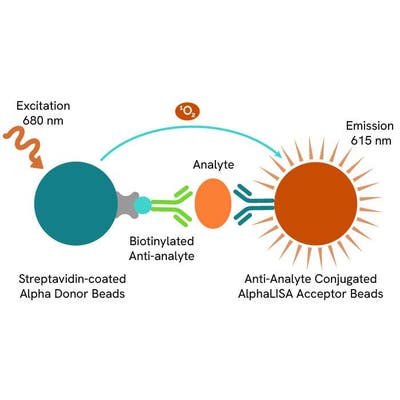
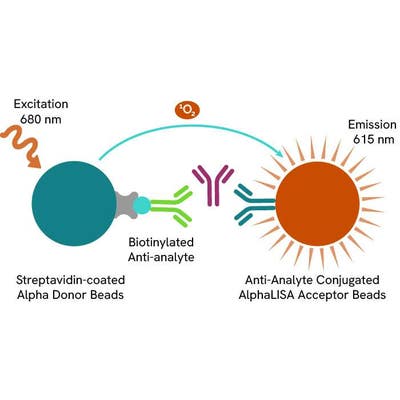
 View All
View All
AlphaLISA Mouse and Rat IL-1β High Performance Detection Kit, 500 Assay Points

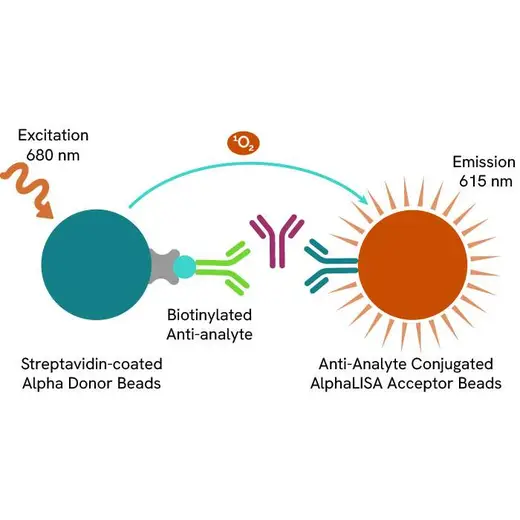



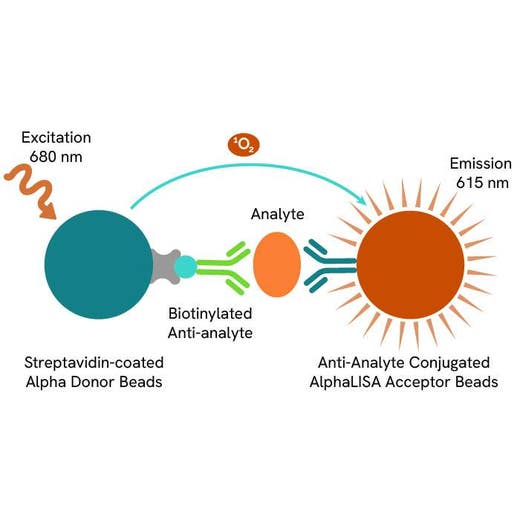
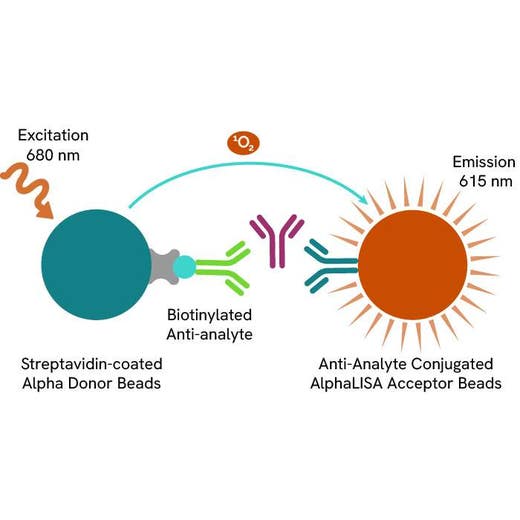



The AlphaLISA™ High Performance (HP) Mouse IL-1β Detection Kit is designed for the quantitative determination of mouse IL-1β in serum, buffered solution, or cell culture medium using a homogeneous (no wash steps, no separation steps) assay.
This kit is the new and improved version of part number AL503.
| Feature | Specification |
|---|---|
| Application | Protein Quantification |
| Dynamic Range | 0.79 - 30,000 pg/mL |
| Limit of Detection | 0.79 pg/mL |
| Limit of Quantification | 2.60 pg/mL |
| Sample Volume | 5 µL |
The AlphaLISA™ High Performance (HP) Mouse IL-1β Detection Kit is designed for the quantitative determination of mouse IL-1β in serum, buffered solution, or cell culture medium using a homogeneous (no wash steps, no separation steps) assay.
This kit is the new and improved version of part number AL503.





AlphaLISA Mouse and Rat IL-1β High Performance Detection Kit, 500 Assay Points





AlphaLISA Mouse and Rat IL-1β High Performance Detection Kit, 500 Assay Points





Product information
Overview
Interleukin 1 beta (IL-1β) is a central player of the immune response, involved in inflammation at local and systemic levels. IL-1β is synthesized as a 31 kDa precursor that is cleaved by caspase-1 (ICE) into the active 17 kDa form and eventually released into extracellular space. Its production has been reported in many cell types including brain and monocytic and peripheral blood mononuclear cells. After binding to its receptor, IL-1RI, IL-1β triggers a cascade of kinase signaling pathways that lead to the activation of transcription factors like NFκB and AP-1, eventually activating the expression of genes such as MIP-2 and C-reactive protein.
Formats
- Our 100 assay point kit allows you to run 100 wells in 96-well format, using a 100 µL reaction volume (10 µL of sample).
- Our 500 assay point kit allows you to run 500 wells in 96-well or 384-well format, using a 50 µL reaction volume (5 µL of sample).
- Our 5,000 assay point kit allows you to run 5,000 wells in 96-well or 384-well format, using a 50 µL reaction volume (5 µL of sample).
Features
- No-wash steps, no separation steps
- ELISA alternative technology
- Sensitive detection
- Broad sample compatibility
- Small sample volume
- Results in less than 3 hours
- Half the time of an ELISA assay
AlphaLISA technology allows the detection of molecules of interest in a no-wash, highly sensitive, quantitative assay. In an AlphaLISA assay, a biotinylated anti-analyte antibody binds to the Streptavidin-coated Donor beads while another anti-analyte antibody is conjugated to AlphaLISA Acceptor beads. In the presence of the analyte, the beads come into close proximity. The excitation of the Donor beads causes the release of singlet oxygen molecules that triggers a cascade of energy transfer in the Acceptor beads, resulting in a sharp peak of light emission at 615 nm.
Specifications
| Application |
Protein Quantification
|
|---|---|
| Automation Compatible |
Yes
|
| Brand |
AlphaLISA
|
| Detection Modality |
Alpha
|
| Dynamic Range |
0.79 - 30,000 pg/mL
|
| Limit of Detection |
0.79 pg/mL
|
| Limit of Quantification |
2.60 pg/mL
|
| Product Group |
Kit
|
| Sample Volume |
5 µL
|
| Shipping Conditions |
Shipped in Blue Ice
|
| Target |
IL-1β
|
| Target Class |
Cytokines
|
| Target Species |
Mouse
Rat
|
| Technology |
Alpha
|
| Therapeutic Area |
Autoimmunity
Immuno-oncology
Inflammation
Metabolic
Neuroscience
Oncology
|
| Unit Size |
500 assay points
|
Video gallery

AlphaLISA Mouse and Rat IL-1β High Performance Detection Kit, 500 Assay Points

AlphaLISA Mouse and Rat IL-1β High Performance Detection Kit, 500 Assay Points

Resources
Are you looking for resources, click on the resource type to explore further.
Our R&D scientists were determined to enable your research by developing new and improved versions of our AlphaLISA cytokine...
Emerging pathways to neuroinflammation and neurodegeneration
Neurodegenerative diseases, such as amyotrophic lateral sclerosis...
Cytokines play an essential role in inflammatory processes, leading to their involvement in viral and bacterial infections, as...
Loading...


How can we help you?
We are here to answer your questions.






























